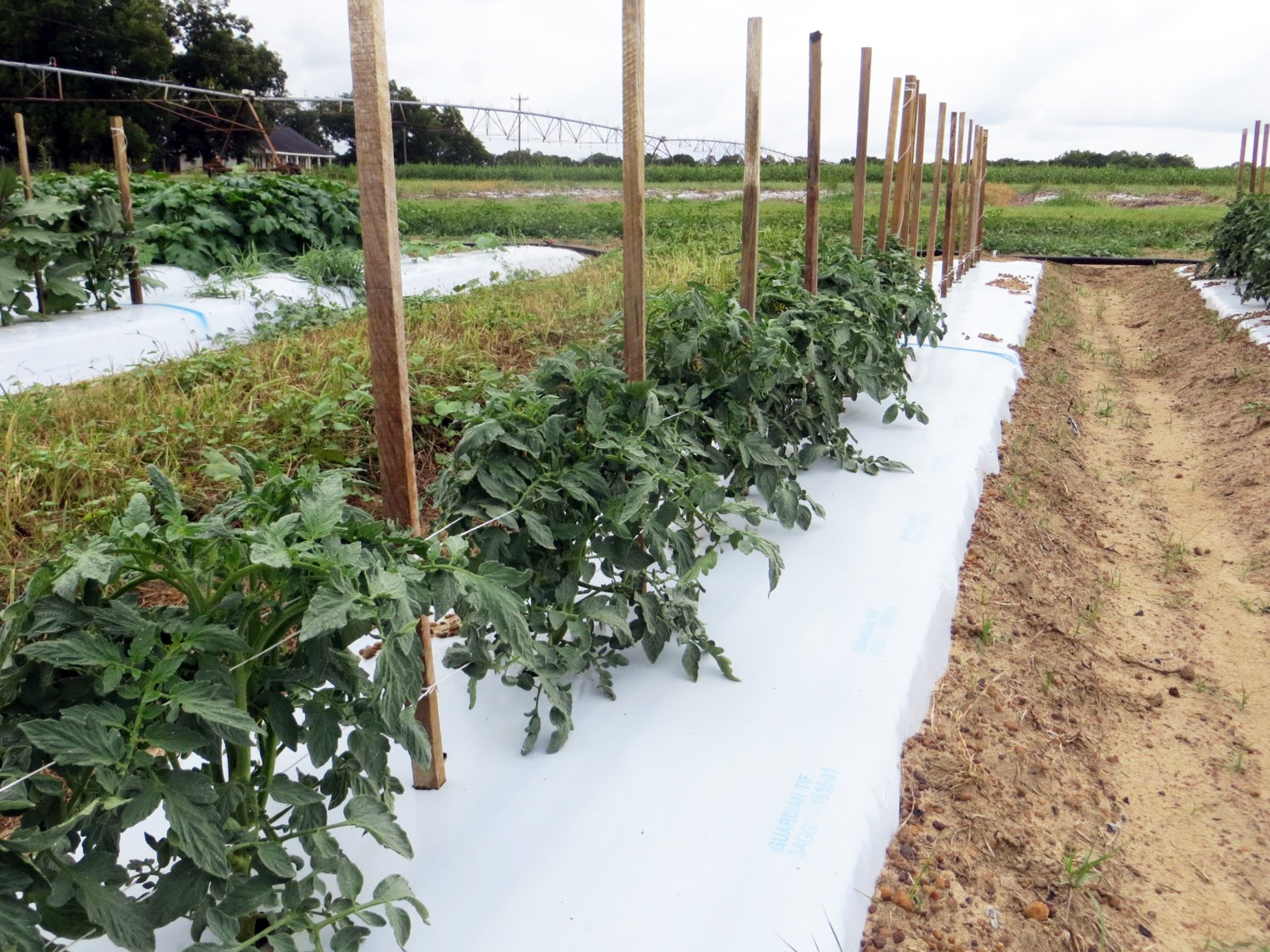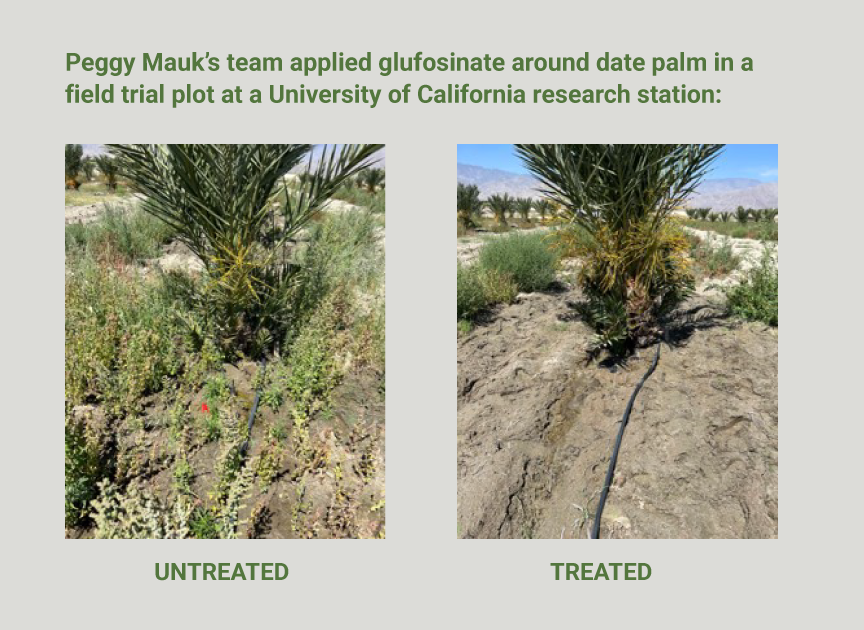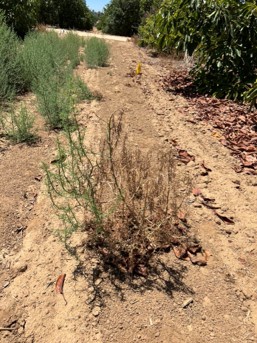
As a result of research conducted by The IR-4 Project, the U.S. Environmental Protection Agency (EPA) has approved significant label expansions for glufosinate-ammonium. Final rules adding to this herbicide label were published to the federal register on June 20, 2023 and September 21, 2022. As a result of these label expansions, a wide variety of specialty crops can now benefit from the effective weed control provided by this herbicide, including: avocodos, figs, melons, hops, squashes, tomatoes, tropical fruits, grasses grown for seed in the Pacific Northwest.
Improved accessibility of glufosinate-ammonium is important because it aids growers in resistance management; it also provides an alternative to glyphosate, which some growers and consumers have chosen to avoid.* As growers work to manage weeds safely, effectively, and in step with public demand, new herbicide options will continue to be needed.
The need for weed control
Expanding access to herbicides is an important goal of IR-4’s work, requiring collaboration with weed scientists at land-grant universities nationwide. University of Georgia Professor and Extension Weed Scientist, Stanley Culpepper, has served as the IR-4 State Liaison Representative (SLR) in Georgia for the past 22 years. During this time, Culpepper has made significant contributions to growers who need better weed management tools.
“Specialty crop growers, especially vegetable growers, are often faced with controlling a number of troublesome weeds,” Culpepper said. “Some vegetable crops may only have two to three effective herbicide options labeled for use. For agronomic crops—such as cotton, corn and soybeans—there are numerous herbicides that can be used to build a diversified management program. That can’t be done with many vegetables because there aren’t enough tools to do that.”
Culpepper emphasized that, thanks to IR-4’s efforts on label expansions like glufosinate-ammonium, vegetable growers are able to implement more diversified weed management programs akin to those of larger-acreage commodities.
Identifying a potential game-changer
Culpepper and his team at the University of Georgia began working with the herbicide glufosinate-ammonium (also known by trade names Liberty and Rely 280) in 2015 to determine if it was an option to control a variety of weeds without harming vegetable crops. Culpepper had seen the effectiveness of this herbicide through previous work with other crops.
“Agronomic crop growers have found glufosinate-ammonium to be a very effective herbicide against a number of challenging weeds, including numerous morning glory species, small pigweed and ragweed,” said Culpepper. “Through my experience working with cotton, we began looking for ways to expand this herbicide into the vegetable field.”
After initial trials with glufosinate-ammonium on vegetables looked very promising, Culpepper and several of his colleagues approached IR-4 and the herbicide’s registrant, BASF, inquiring about expanding the herbicide’s label for use on certain vegetable crops.
“Our experiments with glufosinate showed it had significant potential to be very beneficial in controlling weeds through numerous application methods for specialty crops,” Culpepper said.
Testing an herbicide’s ability to control weeds is straightforward. The greatest challenge is making sure the product does not harm the crop. While herbicides are designed to target weeds, they have the potential to harm non-target plants (such as crops) as well. In order to be approved by the U.S. Environmental Protection Agency for a new use, crop safety and efficacy must be demonstrated.
“When there is a $30,000 per acre specialty crop such as tomato in the field, you better be sure you know what you are doing with an herbicide. There is an additional level of security that has to occur with herbicides compared to other technologies such as fungicides and insecticides.”
An alternative to glyphosate
In addition to the work led by Culpepper in Georgia to make glufosinate-ammonium accessible to specialty crop growers, IR-4-funded trials of the herbicide were also conducted in California, where growers have voiced an urgent need for glyphosate alternatives.
Peggy Mauk, an Extension professor for subtropical horticulture at the University of California-Riverside, conducted both efficacy and phytotoxicity (crop safety) trials with glufosinate-ammonium.
“A request for the label expansion for glufosinate-ammonium came from California growers,” Mauk said. “Growers were concerned about the potential loss of glyphosate herbicide…there was political pressure to find an alternative to glyphosate, and glufosinate-ammonium has become the herbicide of choice for many industries.”

Glufosinate-ammonium efficacy
The Avocado Commission funded Mauk’s efficacy research of both pre- and post-emergent applications. Mauk’s research found glufosinate-ammonium to be a versatile weed management tool.
“Glufosinate-ammonium is an effective broad-spectrum herbicide,” said Mauk. “The weed that is the biggest problem here in Riverside is mare’s tail or hairy fleabane (Erigeron bonariensis). Glufosinate will kill it depending on the application timing and size of the plants. Treating for weeds is also going to be seasonal…the spring is usually worse because spring rains bring a lot of weeds, especially this past year.”

Phytotoxicty trials ensure crop safety
Mauk’s IR-4-funded phytotoxicity trials on avocado at the University of California, Riverside found minimal damage, assuming sound application practices are followed.
“Spray applications should not be made when there is a breeze,” Mauk emphasized. “If the wind carries the herbicide onto the plants, there can be some leaf discoloration. The discoloration appears as occasional purple spots on the leaves. There is not widespread damage. We also never saw any discoloration on the avocado fruit.”
In addition to her team’s work with avocado, Mauk is currently conducting IR-4-funded efficacy and phytotoxicity studies with glufosinate on date palm.
Growers sow the seeds for solutions
Specialty crop growers are continuously challenging researchers like Mauk and Culpepper to come up with new tools, new ideas or new ways to control pests. This kind of persistence and collaboration inspires innovation.
“There is pressure from growers every day to help them find new tools that are not only more effective at managing pests, but are also environmentally sound,” said Culpepper. “The specialty crop growers are extremely advanced and they are always pushing us to find new tools. Many of our accomplishments in expanding the weed management tool box for vegetable crops began with a grower’s idea.”
Many of the specialty crops that have been added to the glufosinate-ammonium labels (Liberty and Rely 280) are crops Culpepper started working with years ago.
“From 2015 to 2019, we did the research on fruiting vegetables, tomato and pepper, and cucurbit crops, including cantaloupe, cucumber, squash and watermelon,” he said. “We have now switched our focus to cole crops, including broccoli and cabbage, along with spinach, lettuce and mustard.”
Culpepper continues to lead IR-4 funded studies for better weed management, and it’s a fruitful collaboration for everyone involved—in IR-4’s Southern Region and beyond.
“I can’t stress enough the support that IR-4 provides to help specialty crop growers find new effective tools. Every opportunity I get, I let growers know how important IR-4 is to the specialty crop industry’s sustainability.”
*The U.S. Environmental Protection Agency’s draft human health and ecological risk assessments for glyphosate are available here.
For more:
Stanley Culpepper
Professor – Extension Weed Scientist
University of Georgia, Department of Crop and Soil Sciences
National Environmentally Sound Production Agriculture Laboratory
Peggy Mauk
Director of Agricultural Operations
University of California, Department of Botany and Plant Sciences
David Kuack is a freelance technical writer based in Fort Worth, Texas.
This story was originally published on January 23, 2023. Due to an unforeseen hurdle in the labeling process for some of the new glufosinate-ammonium uses mentioned, IR-4 had to briefly redact it. The regulatory issue has now been resolved, and we have received approval from the U.S. Environmental Protection Agency and the registrant, BASF, to re-publish the story as of February 16, 2024. No changes have been made to the original content.
